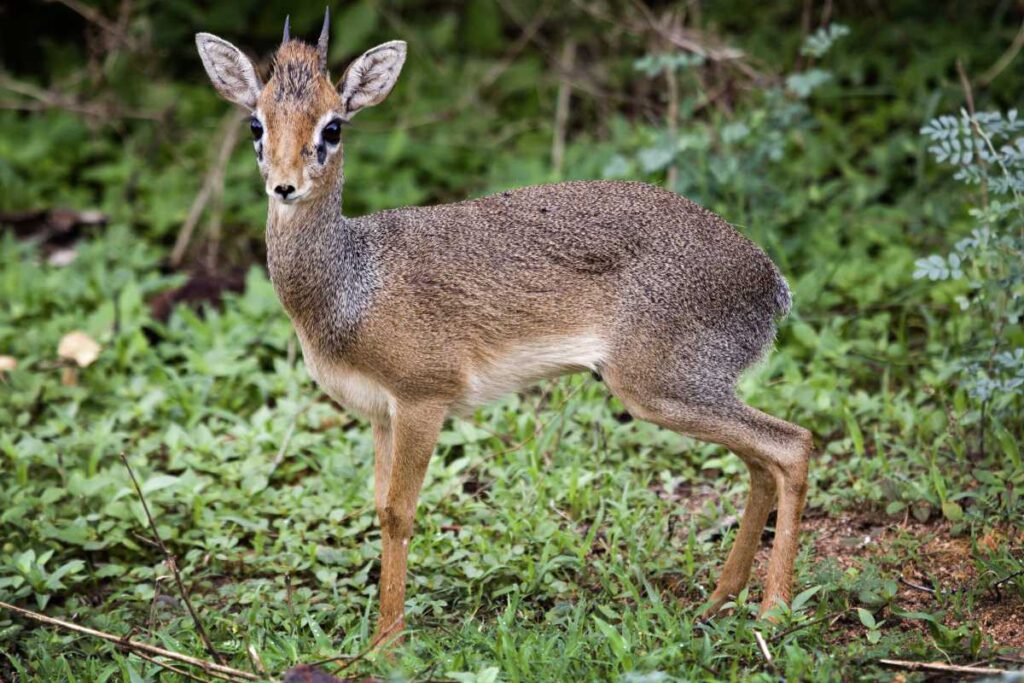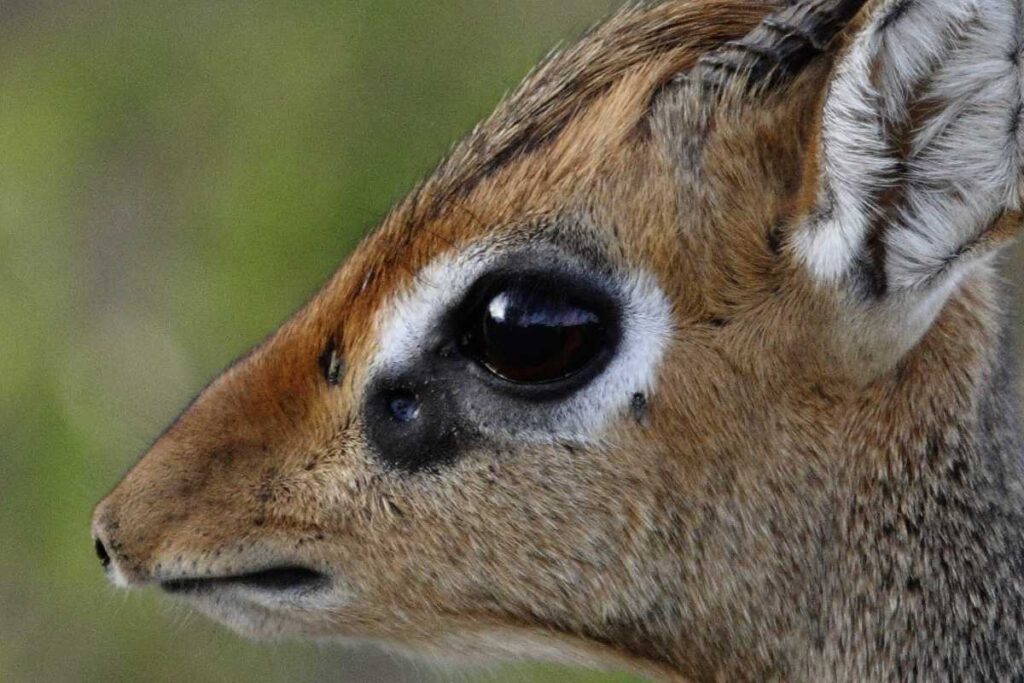Last Reviewed and Updated on March 7, 2023
Dik diks are one of the smallest antelopes in the world. Despite their small size, they are far from fragile; these animals are known for their adaptations that allow them to thrive in harsh environments. From their distinctive appearance to their unique behaviors, there are many fascinating facts about dik dik that are well worth exploring.

About Dik Diks
Dik-diks are small antelopes that belong to the genus Madoqua and are found in bushlands throughout eastern and southern Africa.
There are four species of dik-dik:
- Günther’s dik-dik
- Kirk’s dik-dik
- Silver dik-dik
- Salt’s dik-dik
Dik-diks are one of the smallest antelopes with an average height of 12 to 15.5 inches / 30 to 40 cm at the shoulder and are about 19.5 to 27.5 in / 50 to 70 cm long. They weigh around 6.6 to 13.2 lbs / 3 to 6 kg.
They have a gray-brown coat with lighter markings on their face, underbelly, and around their eyes. Dik-diks have large, dark eyes and a slightly elongated snout.
They are herbivores, feeding on leaves, shoots, fruits, and flowers.
Dik-diks are monogamous. Females give birth to a single calf (up to twice per year) after a gestation period of around 5-6 months.
The conservation status of Günther’s, Kirk’s, and Salt’s dik-dik is marked as least concern, while the conservation status of Silver’s dik-dik is unknown.
Interesting Facts About Dik Dik
Learn some fun facts about dik dik. Love learning about antelopes? Read our list of addax facts or bongo antelope facts.

Love learning about all kinds of unique animals? Read these 100 weird animal facts.
1. They are named for the sound they make
Female dik-diks make a repetitive “dik-dik” sound when they feel threatened. This whistling sound is made through their long, tubular snouts.
2. Dik diks have several adaptations to life in a desert
Dik-diks are found in various habitats, including deserts and arid regions. They have adapted to harsh desert environments in several ways.
Dik diks are great at conserving water to the point where they can concentrate their urine if need be. They also have a lower metabolic rate than would be expected for their size.
Their long snouts are most likely an adaptation to prevent overheating in extreme conditions. The bellows-like muscles in the snout pump blood, which is cooled before it is recirculated back to the body.
3. They have a large preorbital gland under their eyes
The preorbital gland in dik-diks is a scent gland located near the eye, just below the tear ducts. This gland is found in both males and females. This gland produces a sticky, dark secretion and is used for scent marking and communication.

4. Dik diks can dip grass into their preorbital glands to mark territory
If you have a preorbital gland as large as dik-dik does, you can push stuff in, apparently. One way the dik dik marks their territory is to insert grass stems or twigs into the gland to scent mark them.
5. They are monogamous and mate for life
Dik diks mate for life. They live in pairs on their spot of land. That all said, if the opportunity arises, males will mate with other females (hop over the fence).
Their monogamy is thought to be a way to keep themself safe. Going out of their territory in search of new mates each breeding season would expose them to even more predation.
6. Males have horns, but they aren’t always seen
Female and male dik dik’s can be hard to tell apart. Females tend to be larger than males in general, but the difference in size isn’t drastic.
Males have small backward slanted horns, but the horns can be partially hidden by dik dik’s hair on the head (tuft).
7. Dik diks have many predators
Their small size makes them a very desirable prey… They are hunted by pretty much everything that hunts. Some of the most common predators include leopards, caracals, hyenas, lions, wild dogs, larger lizards, jackals, baboons, cheetahs, eagles, hawks, pythons, and of course, humans.
8. Dik diks plan their escape routes
One way to stay alive if you are a dik-dik is to know your way around. The dik-dik pair knows their territory very well; they have a series of well-established runaways that go through and around the territory, ready to be used when they feel threatened.
9. They run in a zig-zag pattern
When escaping their predators, they run in a zig-zag pattern.
